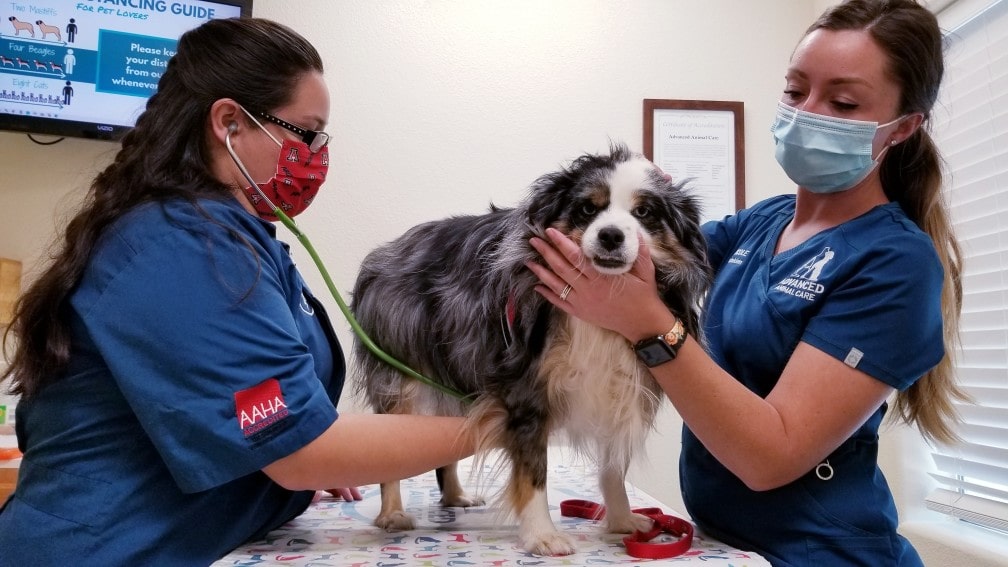What is patella luxation?
Is your dog walking awkwardly as if it feels painful? Is he limping or hopping, showing signs of uncomforting while walking? These are possible signs of patella luxation, which means your dog’s kneecap shifts from its proper location.
A kneecap rests on a dog’s femur bone, but luxating patella causes the kneecap to dislocate away from the proper alignment. Consequently, dogs experience lameness. Lameness causes your dog to skip and hop on one leg as they try to reposition and align its popped kneecap. This orthopedic condition can affect all breeds of dogs.
What are the symptoms of patella luxation in dogs?
Luxation of the patella may cause your dog to experience intermittent hind limb skipping, locking up of the limb, or lameness. It can occur in one or both of the hind legs leading to bunny-hopping movement or a stiff and awkward gait.
In most small breed dogs, this movement can occur medially (medial luxation) or towards the inside of the limb. It can occur towards the outside of the leg (lateral luxation). There could also be cracking or popping noises when the knee is bent. Some dogs may even refuse to exercise, run and jump, and cry out in pain.
Whom does it affect the most?
Patella luxation is a genetic condition that can often affect the following small breeds
- Toy Poodles
- Miniature poodle
- French bulldog
- Shih-Tzu
- Pug
- Chihuahuas
- Pomeranians
- Staffordshire Bull Terriers
- Yorkshire Terriers
- Pekingese
- Boston Terriers
- Jack Russell Terriers
What causes patella luxation in dogs?
The following bone abnormalities are evident in dogs with patella luxation-
Shallow trochlear groove:
The trochlear groove is the position where the patella should sit normally. And as and when the leg bends, it should enable the patella to slide up and down in it. However, the patella slips in and out of this groove are too shallow.
Medially placed tibial crest:
The Patella’s tendon is the place where the patella sits. In some dogs, the position of attaching the bit of bone to the shin bone by this tendon isn’t correct. As a result, the tendon gets pulled to one side. It maximizes the chance of the patella moving out of place.
Bowed femur:
In some dogs, the thigh bone or the femur is either curved or bow-shaped. It leads to patella luxation in them.
Trauma:
Any accident or injury can damage the knee ligaments or bones of the dogs and may lead to traumatic patella luxation.
Developmental:
Patella luxation could be a hereditary deformity or weakness in the ligaments or knee bones.
Congenital:
Patella luxation in dogs can be present at birth.
Read Also: 10 Best Pet Health and Veterinary Information Sites
How is patella luxation in dogs diagnosed?
The veterinarians will diagnose the issue by doing a set of X-Rays while the dog is under sedation. Patella luxation is graded according to the degree of severity. The grades determine the seriousness of the condition and recommend treatment options.
- Grade I indicates the minimal lateral deviation of the patella with no cracking sounds. The patella returns to its original position after extension. Grade 1 doesn’t result in clinical symptoms and is examined by a vet.
- Grade II indicates up to 30 degrees of torsion in the tibial crest. It is a permanent luxation. The knee frequently moves from its intended position. Manual replacement can help realign the popped kneecap. It could be painful if the damage to the cartilage is caused by frequent luxation.
- Grade III indicates permanent luxation with a tibial crest of 30-50 degrees. There will be a flattened knee joint that can be held in a partially flexed position. Due to changes in the limb structure or cartilage damage from repeated luxation, dogs with grade III conditions may experience severe pain and display more lameness.
- Grade IV indicates permanent luxation up to 90-degree deviation. This severity does not allow the dogs to use their legs. Severe changes in limb structure lead to lameness or impaired mobility and reduced limb function. Manual replacement is almost impossible at this stage.
Grade I and II can be monitored and require no treatments. Some dogs with grade II may require treatment. However, dogs with grade III and IV luxating patella require treatment to prevent pain and correct the lameness.
The treatment enables the dogs to comfortably and normally exercise. With time, if the condition deteriorates again, get a veterinary check-up immediately. There may be a sudden worsening of symptoms if patella luxation leads to cruciate rupture.
How to treat patella luxation in dogs?
Treatment of patella luxation in dogs varies according to the grade diagnosed by the vet.
Supportive treatment:
If your dog is diagnosed with grade 1 luxation, exercise and supportive nutrients can help prevent the kneecap from sliding out of place.
It is significant to maintain the proper body weight of the animal as per its size to reduce stress on the knees and strengthen the muscles surrounding it through daily exercise. You may also provide nutritional supplements to support the joint and the surrounding tissues.
Surgical treatment:
Vets recommend several surgical options for animals with grade III and IV patella luxation. The surgery helps restore tendons, joints, and bones to a normal alignment and prevent future slipping. Surgery is done by deepening the patella’s groove or tightening the joint capsule to prevent slippage.
In many severe cases, the treatment may also include rotation of the leg bones back into the correct position. Mild to moderate cases of patella luxation in dogs are treated with surgery and medication and should help your dog return to normal health in no time.
Medications:
In some cases, vets may suggest steroids, narcotics, and NSAIDs for pain and inflammation. Supplements such as Vitamins C and E, glucosamine, and collagen injection are given to reduce pain.

 DogExpress
DogExpress


















 in Chandigarh, India.
in Chandigarh, India. 
